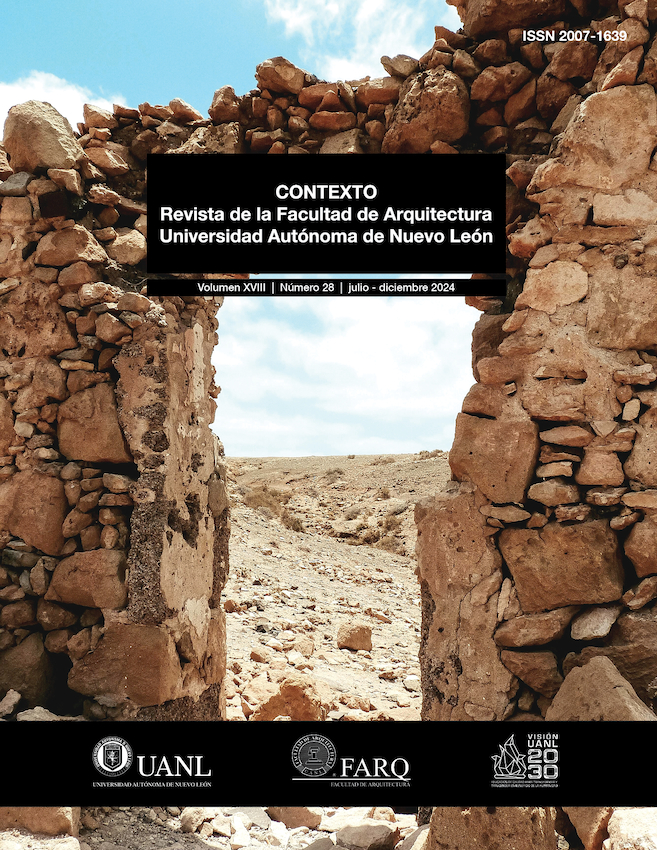Studying the effects of modern construction on the old city with regard to evaluating the visual impact, studying the case Lawang Sewu building as an example.
DOI:
https://doi.org/10.29105/contexto18.28-410Keywords:
Historic buildings; high-rise buildings; Lawang Sewu; Tugu Muda; demographic characteristics.Abstract
Lawang Sewu, un edificio histórico en la ciudad
de Semarang, se erige como una de las principales
atracciones turísticas de la zona. Iniciada en 1904
y terminada en 1918, esta emblemática estructura
ha sufrido varias transformaciones en cuanto a su
uso y propiedad. Inicialmente sirvió como sede
administrativa de Nederlands-Indische Spoorweg
Maatschappij (NIS), una corporación privada
que opera en el sector ferroviario, Lawang Sewu
tiene un valor histórico significativo dentro de la
ciudad antigua.
Para profundizar en la percepción del público
sobre este renombrado edificio histórico y sus
paisajes urbanos circundantes, se llevó a cabo
un estudio para examinar el impacto de las
estructuras altas en Lawang Sewu, así como en
las experiencias visuales de los visitantes y el
entorno histórico en general. La investigación
se centró en un edificio de gran altura de nueva
construcción cerca de Lawang Sewu, teniendo
en cuenta su altura, diseño y color como
atributos físicos clave, al tiempo que utilizaba
las regulaciones gubernamentales de altura
como punto de referencia. Se llevaron a cabo
experimentos de simulación en una amplia gama
de encuestados con diferentes características
demográficas procedentes de las cercanías de
Lawang Sewu
Downloads
References
Since ICOMOS adopted the Heritage Impact Assessment (HIA) Guidelines, heritage and impact assessment has developed into a significant research method for city planning and urban design (Ashrafi, Kloos, and Neugebauer 2021; Yahampath 2014; Rodgers and Bandarin 2019). In various Indonesian cities, there are two completely different approaches to urban planning that are used for the development of the neighborhood around historic buildings. One is the overdevelopment of the area around historic structures in an effort to increase their commercial value. However, this method would completely engulf the old building in the surrounding skyscrapers, which would lessen the ancient structure's function as the visual focal point in the environment. Since ICOMOS adopted the Heritage Impact Assessment (HIA) Guidelines, heritage and impact assessment has developed into a significant research method for city planning and urban design (Ashrafi, Kloos, and Neugebauer 2021; Yahampath 2014; Roders and Bandarin 2019). In various Indonesian cities, there are two completely different approaches to urban planning that are used for the development of the neighborhood around historic buildings. One is the overdevelopment of the area around historic structures in an effort to increase their commercial value. However, this method would completely engulf the old building in the surrounding skyscrapers, which would lessen the ancient structure's function as the visual focal point in the environment. The opposite method is overprotection of historic structures, which imposes stringent limitations on the surrounding architectural form in an effort to enhance the building's aesthetic and visual qualities. However, this practice does not reasonably develop its economic values. It has become necessary for the old buildings to blend with the contemporary urban environment as globalization in Indonesia has progressed. However, concurrently, historic structures are now more in danger than ever due to insufficient protection methods and increasing urban expansion (Najd et al. 2015). According to Sirisrisak (2009), proposals for urban planning and development should be built on the foundation of historic buildings. The public's input should never be disregarded while creating an urban planning strategy (Yuen 2005). Therefore, it is important to research how the public perceives urban landscapes that combine nearby recently constructed high-rise structures with nearby old buildings.
Downloads
Published
How to Cite
Issue
Section
License
Copyright (c) 2024 Hassan Gbran, Suzanna Ratih Sari

This work is licensed under a Creative Commons Attribution-NonCommercial 4.0 International License.
The authors who publish in this journal accept the following conditions:
1. The authors keep the copyright and give the journal the right of the first publication, with their content registered under the Creative Commons License, which lets third parties to use the published material as long as they mention the authors and the first publication from the journal.
2. The authors can make other independent and additional contractual agreements for the non-exclusive distribution of the version of the article published in the journal (for example an institutional repository or a book) provided that they explicitly mention that the content was first published in CONTEXTO. Revista de la Facultad de Arquitectura de la Universidad Autónoma de Nuevo León..














.png)





